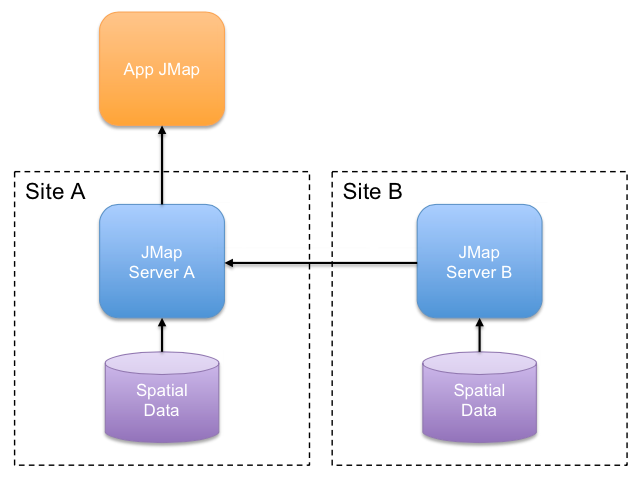![]()
Introduction
It is possible to create connections from one JMap Server to another. These connections can then be used to share layers and spatial data sources between different JMap Servers, avoiding duplication of source data. They may also be used by some JMap Server extensions that require server to server communication. These connections are used, among other things, when creating JMap Server vector or JMap Server raster data sources and when using shared layers.
JMap Server manages connections towards other JMap Servers by placing them in a pool (refer to Resource Pooling in the Advanced Concepts section). Resource pools have a certain number of open connections that are shared between users, based on how they need to access the other JMap Server instances.
Note that your JMap user license must allow server sessions in order for another JMap Server to connect to your JMap Server. For more information, refer to the JMap Server Status section.
The following diagram shows the connection between two JMap Servers (A and B) where the JMap application connected to server A accesses spatial data served by another JMap Server instance (server B).

Connection between 2 instances of JMapServer